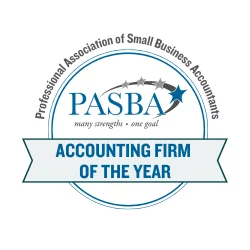Retirement plans are now mandatory for all employees in California. Learn how your employees qualify–and what this means for your business.
California is the first state to pass legislation to address the looming nationwide retirement savings crisis. Based on information gathered from a UC Berkeley study, more than half of California workers did not have access to a retirement plan. California created a state run retirement plan called CalSavers. California also passed a law that businesses with at least five employees must provide their employees access to CalSavers or another private retirement program.
What The Law Says About The Mandatory Retirement Plan
As of June 30, 2022, California businesses with five or more employees (one of whom must be 18 yrs. or older) are legally obligated to offer a retirement plan to their employees.. Employers are required to opt into the CalSavers program or designate they offer another private retirement plan to their employees in order to avoid penalty fees. After a 90-day compliance period, employees will be charged $250 per employee. The fee increases to $500 per employee 180 days after the registration deadline.
Why Offer A Retirement Plan To Your Employees?
In general, retirement plans are good for employee retention which in turn is good for business. When an employer invests in the future of their employees, it can ease financial stress for the employee and positively impact productivity, engagement, and employee retention.
- Tax advantages: Employer contributions to retirement plans are tax deductible.
- Enhances employee motivation: Proactively investing in an employee’s future makes an employee feel valued and less likely to move on.
- Can supplement salary: The addition of a retirement plan makes the overall compensation package you can offer an employee more attractive.
- Gives company a recruiting advantage: The benefit package that you offer including retirement has the potential to attract top talent to your business.
- Helps all employees save up for life after retirement: Enabling your employees to retire with savings can result in a mutually loyal relationship.
What Does This Mean For Your Small Business?
As a small business owner, plan to invest in a retirement plan if you want to attract and retain employees. There are several options when it comes to employee retirement plans and you should choose the one that works best fiscally for your company.
What Are Your Options For Retirement Plans?
To remain in compliance, California employers will need to choose to opt into CalSavers, choose the popular 401(K) plan or one of the other lesser known retirement plans available.
CalSavers: The State-Sponsored IRA
CalSavers was created by the state of California to improve accessibility for employers to offer retirement benefits to their employers.
Advantages
- No Employer Fees
- No Fiduciary Responsibility from Employers
- Simple Registration, Automated Enrollment and Investment Options
- Minimal Administrative Upkeep Required
Disadvantages
- Income Limits: The IRS has set limits on eligibility based on the employee’s tax filing status.
- Low Contribution Limits: Compared to other retirement plan options, employers have a lower limit to the amount of matching funds they can offer employees.
- Requires fees for Employees:Employees are charged less than 1% for administrative and investment fees.
Important Features Of CalSavers
- CalSavers is a state-sponsored Roth IRA allowing for employees to save up to $6,000 per year towards retirement ($7,000 for those 50 or older).
- Once an employee is registered by the employer, employees may adjust their automatic payroll deductions at any time online.
- Employees can opt out of these payroll deductions at any time as well.
- The CalSavers account is portable and remains with the employee throughout their working life, even if they change employers.
Employer Responsibilities
- Register and add all participant data for eligible employees
- Provide program information for both current and new employees
- Manually enroll all participants and make annual auto-increase deferral adjustments
- Submit and track payroll contributions
- Track and honor opt-out requests
Employee Qualifications
- Must be 18 years of age or older
- Have employment status under Unemployment Code Section 621
- Receive a Form W-2, Wage and Tax Statement with California wages from an eligible employer
- Are a sole proprietor or in partnership with an eligible employer
Employees Can Customize their Investment Options within CalSavers
- Sustainable balanced fund
- Core bond fund
- Global equity fund
- Money market funds
401(k): The Popular Choice For Employers
The 401(K) is an employer-sponsored savings account funded by employer and employee contributions.
Advantages
- Lets employees contribute 3 times as much as CalSavers to their retirement savings account each year
- Allows Matching Contributions as Tax Deductions for Employer and Employee
- Other state and payroll tax benefits for employers
Disadvantages
- High administrative fees for employers
- High costs for outsourcing record-keeping, investments, and administration
- IRS regulates 401(k) plans and requires strict compliance reports
- Plans are cumbersome to administer
Other Retirement Plan Options
If the CalSavers or 401(K) Retirement savings plans are not right for your business, you should look into these options as well.
408(p)/Simplified IRA:
If you have less than 25 employees, this plan offers great flexibility,does not require compliance reporting and is the easiest to understand with the least amount of paperwork.
408(k)/Simplified Employee Pension:
This is an employer-sponsored savings account similar to the 401(K), however only contributions from employers go into the account.
401(a) Qualified Plan:
A retirement plan created for government, education, and non-profit entities with lower risk investment options for employees.
Annuity Plans:
A retirement annuity is an insurance contract that puts aside a lump sum to be paid out to the employee as an income in retirement.
Payroll Deduction IRAs With Automatic Enrollment:
This simple retirement savings plan requires an employee to establish an IRA (either a Traditional or a Roth IRA) with a financial institution. The employee then authorizes a payroll deduction for the IRA.
Choosing The Retirement Plan That’s Right For You
The challenge of navigating the new laws regarding mandatory retirement options for your employees may seem overwhelming. Expert CPAs can calculate the tax ramifications for each plan and help you file the necessary documentation to put the plan you choose into place.
Be Fiscally Wise In Choosing The Right Retirement Plan
J.R. Martin & Associates is in business to guide Small Businesses by uncovering solutions to your most pressing financial problems. We want to help you support your employees by finding a retirement plan that fits your situation best.
We can help you with your retirement plan paperwork. Inquire about our small business accounting services today!



